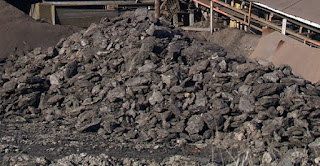Lignite in Iceland and the Genesis Flood
Ever hear of peat? That and peat moss grow in boggy places, and they contain decaying plant material. They are acidic and help improve soil. Kick it up a notch and we get lignite, which is called brown coal. It has noticeable plant material. Lignite has uses, but less energy output than true coals.
Lignite was found in Iceland, and the plants of the lignite beds were preserved by lava layers on top of each other. Uniformitarian scientists are baffled as to how some plants reached Iceland in the first place.
 |
| Lignite Brown Coal, WikiComm / Anton Lefterov (CC BY-SA 3.0) |
Lignite layers have been found within six different sedimentary units along Iceland’s coast, mostly on the northern and western flanks. Some of these layers contain leaf fossils, stems, and pollen. About 40 species of flowering plants, seven conifers, and four ferns and fern allies have been identified in the lignite beds. Many of these same plant fossils are found on North America and Europe at the same geological level.
I know you're burning to read the entire article. To do that, click on "Flood Explains Mysterious Iceland Plant Fossils."